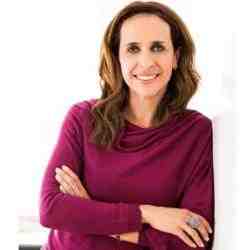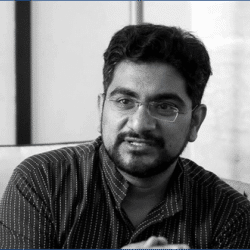Introduction
Ishita Chaudhry is ridding Indian society of the deeply held premise that youth should have little or no say in matters of policy or implementation of ideas that directly impact their lives. Ishita’s organization, The Youth Parliament Foundation (TYPF), strengthens youth-led movements in India by creating opportunities for them to engage with social change and transform an adult-dominated system to one where young people have the ability to exercise their rights.
The New Idea
Ishita thinks most youth movements are not cognizant of the sociopolitical and economic history of previous initiatives and therefore, do not benefit from that experience or understand the history. She anticipates adult-led movements eventually dying out if conversations are not extended to younger generations. In this context, Ishita believes that building intergenerational collaborations that foster youth-focused and youth-led initiatives are critical to creating changemaking societies.
Ishita’s vision is to see young people recognized as powerful decision makers and equal stakeholders, leading initiatives and collaborating with adult-led systems to influence policies and practices that advance their concerns as citizens. TYPF’s interventions are designed to put both economic and social power in the hands of young people and create opportunities for them to proactively engage in solving social problems that they identify as important. TYPF equips young people with the tools to access information, services, and rights so that they can build collective platforms to create social change and negotiate with adult-led systems. Working directly with approximately three hundred young people every year, TYPF provides youth with the framework to organize themselves into action-oriented teams leading initiatives across six focus areas at the grassroots and policy levels. TYPF bridges the intergenerational divide by building partnerships with citizen organizations (COs) that provide a basis for the youth initiatives and facilitate cross learning. In addition, each young person in TYPF is connected to an adult mentor from among the network of partners who provides inputs and dialogues with him/her through their entire experience with TYPF.
TYPF also establishes strong connections between youth movements across India to build their capacities and encourage them to collectively lobby for their causes. Over the last ten years, TYPF has provided a space for youth to undergo transformative experiences and created sustainable social impact through their initiatives. More than 40 percent of TYPF’s alumni are working with human rights related issues and an additional 20 percent graduated to establish their own organizations and initiatives that TYPF continues to support.
The Problem
With a population of 1.2 billion, India has the world’s largest number of young people. According to the latest census (2001), more than 50 percent of India’s population is below the age of 25. Over 600 million young people need to be seen as active participants in the growth and development of the country. Instead, they are often viewed as passive recipients, primarily due to gaps in existing policies that fail to address their real life challenges and a lack of trust and investment in them as leaders of change.
Young people in India are confronted every day by problems, including those related to gender issues, violence, and lack of opportunities, but have not been encouraged to voice their solutions. At an age when people are defining their identity and gathering a sense of what they can do in the world, most educational institutions and family structures remain rigid and hierarchical, discouraging youth from thinking of themselves as citizens who can make a difference in society.
The problem with parents and schools goes beyond disempowerment. Parents, teachers, and society don’t even talk about certain issues. Whilst diverse issues impact young people differently, there is an existing commonality in the needs and demands of the youth across urban and rural demographics, a fact that is commonly and often ignored in key policy decisions that impact youth health and rights. A majority of the information that is available to young people regarding their life skills, gender, sexuality, health, and knowledge of rights (both legal and human rights) is inaccurate and inconsistent. As a result, for instance, 73 percent of young girls in India have misconceptions about modes of HIV transmission, and at the same time, data from UNAIDS indicates that globally 50 percent of HIV infection is among those under 25 years of age. According to the Ministry of Women and Child Development, more than half of the children in India are subjected to sexual abuse.
Moreover, almost all policy formulators/influencers in India are senior experts. With rarely any representation, the resulting structures encompass youth as mere recipients of adult design. This, with a lack of access to information and gaps in policies, render it ineffective to address the real needs of youth. The lack of faith in the potential of young people is in fact hindering the country in realizing its full potential. Further, there is a serious disconnect between the younger and older generation working in social change movements. When young people have the space to come up with their own ideas and solutions and find an ecosystem of adults (parents, teachers, and bureaucrats) who will support them as critical agents of change, India will see real growth, led and sustained by its most powerful group: Youth.
The Strategy
Initially, TYPF gave space to young people to launch initiatives in any chosen area of interest, to create social change. However, Ishita realized that there were particular themes that repeatedly arose in projects created by young people. These themes are defined as six verticals within TYPF, namely, sexual education, right to information, life skills and mental health, human rights education, education for underprivileged children, and enabling the arts. These themes give young people the space to choose what they want to do and allows the organization to make a concerted effort to tackle particular issues and create impact. In each of these six areas TYPF: (i) engages youth at the grassroots level, and (ii) creates opportunities for youth to collectively influence policy.
To enroll volunteers, TYPF reaches out to young people through an array of channels, such as schools, social organizations and media partners. Each year approximately three hundred volunteers are enrolled. Teams of volunteers choose an area of interest within the verticals, put together their ideas, create an action plan, build a sustainability plan, identify a community to implement their ideas, and relate their work to policies. For instance, volunteers launched “VOICES”—a peer education program that develops stronger life skills and encourages informed decision-making in school, addressing mental health issues linked to peer pressure, stereotyping, and the influence of appearance during adolescence. At the end of the project, volunteers put together a recommendation to each school, suggesting further steps the school can take and to continue an open dialogue. The program has engaged over two hundred peer educators and reached out to 1,000 students. In the “Right to Information” initiative which aims at increasing young people’s involvement with legislative processes, volunteers have conducted open forum workshops, panel discussions, meet your leader accountability sessions, and organized other methods of community advocacy, with a focus on governance.
Each volunteer has to contribute a small sum of money and organize fundraising in their community that collectively contributes to 50 percent of TYPF’s budget. Ishita believes that fundraising for their own ideas and programs is not only good for developing young people’s communication skills, but it also becomes an excellent way for them to interact with communities, encourage public opinion and involvement with the vision of the organization, and the need to invest in youth. The term for each cohort of volunteers is two years, but Ishita has engineered mechanisms to work with the turnover, so as to maintain a balance between ensuring continuity of work on the issue and providing a transformative experience. They transfer power and working roles each year, transitioning to a younger generation of volunteers with their verticals. While carrying out these initiatives young people gain a deeper understanding of the problem and internalise the experience of solving it.
As each program at TYPF has an aspect of policy work associated with it, TYPF engages young people in order to train them on how to advocate and build effective relationships with stakeholders as well as on how “the rules” work: The content of specific laws, policies, and local contexts that shape the policy work they are doing. TYPF ensures that volunteers acquire the skills and tools to collect, collate, analyze, and share data to create a basis for their work. Through this process, TYPF builds young people’s capacities to advocate, lobby and influence policies, become decision makers, and interact with government agencies at differing levels (e.g. with local communities and at national policy forums) working in coalitions with young people and COs. For example, “Blending Spectrum” is an initiative that engages young people as peer educators to work with urban street youth to promote child rights and learning opportunities, works at the community level to ensure that over forty families living in a slum in New Delhi can access and obtain a form of permanent identity and are able to take full advantage of government schemes for free primary education. Working closely with COs, the programs create strong youth-adult partnerships and give volunteers the opportunity to work closely with the community.
At the national level, TYPF is bringing youth led initiatives from across the country together, to help build their technical capacity and create space for collective advocacy. These “forums” are not aimed at bringing them to agree with each other, but instead, to allow young people from different geographies, religions, and socioeconomic conditions to exchange their opinions and be heard as a powerful collective voice. To illustrate, TYPF’s “Know Your Body, Know Your Rights” program has evolved to be the first youth-run and led campaign to legalize and support the implementation of sexual education, partnering with youth organizations, civil society agencies, and UN institutions. Since 2010, the campaign has involved over three hundred young activists from different communities across ten states in India, using social networking, poster campaigns, national and state level meetings to garner young people’s responses on the latest draft of Adolescence Education Programme by NCERT, UNFPA, and UNESCO (2010). TYPF also co-hosted two bilingual, intergenerational Right to Information Forums with one hundred and fifty young people and COs in New Delhi (2010) titled, “From Exploring the RTI Act to Building a Movement—Do Young People Matter?”
TYPF and its volunteers have conceptualized, developed, executed, and funded more than two hundred and fifty social projects by working with 5,000 peers across India, and reaching out to over 300,000 young people. More recently, TYPF worked with UNAIDS in Geneva to co-draft the founding and structure of their first global “Youth Leadership and Mentorship Hub” to encourage intergenerational mentoring for upcoming young leaders—including young people’s leadership within the HIV prevention revolution, with a particular focus on encouraging leadership and grassroots participation from young people in communities in the Global South.
Ishita believes in scaling TYPF’s work by strengthening and consolidating youth movements across India. TYPF supports and partners with a range of youth activists and youth-led organizations. For example, in 2009 UNESCO in partnership with TYPF launched “Vikalp” as a space for young working activists to come together to reflect on best practices, address challenges, share resources, and develop inclusive strategies to promote youth leadership and movements across India. The forum brought together thirty-two young activists from six states. As an outcome, TYPF and UNESCO made small grants available to support youth-led programs. According to Ishita, TYPF should be replicable in identifying partnerships with youth groups working across diverse demographics and work collectively to further the vision of realizing young people’s human rights.
The Person
Ishita grew up in a middle-class Punjabi family. She remembers having her grandmother, the first woman to play squash professionally for India, as a role model. Ishita was always allowed to do whatever she wanted; she had an open and safe space to discuss issues with her parents, and never suffered discrimination due to being a girl. However, outside her house, Ishita struggled with bullying and developed the feeling that she was not a good fit in society. Her family expected her to attend boarding school after she turned 13 but she didn’t want to leave home and spent a long time trying to convince her parents to let her stay in Delhi. They asked her to try it and “if she didn’t like it, she could come back.”
At boarding school, she met a German professor, who became her piano teacher and mentor. With him, and through music, Ishita learned how to use her energy; how to express herself. This experience showed her talents and gave her confidence to trust in herself and communicate what she wanted to the world. But, although she tried, she still found it difficult to fit into the school culture and curriculum. Struggling with depression, Ishita found the courage to write a letter to the board of the school explaining why she didn’t want to be there. Her parents completely respected her decision. Moving back to Delhi, she joined a debate group at school, which helped her see how good she was in organizing thoughts and arguments. Speaking in front of other people she felt valued and confident. Moreover, this experience helped her find colleagues with whom she had many things in common. It was the first time Ishita identified peers her age with whom she then discovered the joy of doing things together.
That same year, an important experience changed Ishita’s trajectory. After the Godhra riots in Gujarat in 2002, Ishita saw an image on TV of a group of children from Hindu and Muslim communities being burned “in the name of religious fundamentalism.” When the media asked the Chief Minister of that state, what he thought was the reason for riots between two communities and why the government had done nothing but look on, his response was: “Every action has an equal and opposite reaction.” Ishita was shocked with his answer. When she asked other young people about their opinions, they had nothing to say. She realized there was a huge problem in society that had to be solved. For her, the lack of access and ability to make an informed judgment has dire consequences at policy tables that influence human rights—and young people’s rights.
After a public speech on this issue, where she presented her thoughts, the founder of Barefoot College, Bunker Roy, sitting next to Ishita, asked her: “What are you going to do about it?” That question stayed with her and, after a few weeks of discussions with Bunker, who had a very interesting experience with children’s empowerment, Ishita came up with the idea of a Youth Parliament. She felt that there was a need to create a collective that could serve as a resource base to empower young people and make it possible to collectively organize and lobby for issues that they were passionate about. During her period of brainstorming with Roy, Ishita gained support from a member of the India Habitat Center, Arshiya Sethi, who fought for an independent space and resources for Ishita to start executing her ideas from the center, without any kind of adult creative control. In the first years, they ran the organization out of the Habitat Center and Ishita says that even though they disagreed many times, their intellectual and financial support—as well as Bunker’s mentorship—taught her the value of having strong youth-adult partnerships and the power of what they can achieve.
As an 18-year-old, Ishita developed a very simple model in which young people came together to discuss different issues that affected them. For one year, they discussed ten macro issues. The model was very simple: Twenty-five people volunteered to organize the sessions, in which about five hundred people would attend. The 10th issue was about drug addiction and Ishita realized that most of the young people were coming from middle- and upper-classes and she needed to diversify the audience for it to be valuable. Hence, she left the premises of the Habitat Center and moved the operations to her house, where she ran the organization for seven years. There, Ishita involved her parents and the community. This experience became the basis for what has become one of the key success factors for TYPF model—the involvement of parents and communities with young peoples’ ideas. In 2010 they moved to a new office, which now acts as a hub for the youth movement.
Ishita received the Change Looms award from Ashoka (2008), British Telecom Seen & Heard Award (2008), and the President of Nepal’s Young Achiever’s Award (2009). She is a founder member of the International Alliance of Feminists for Reproductive and Sexual Justice, a member of UNESCO Global Advisory Group on Sexuality Education, and a board member of Connecting Youth Organizations Nationwide.




